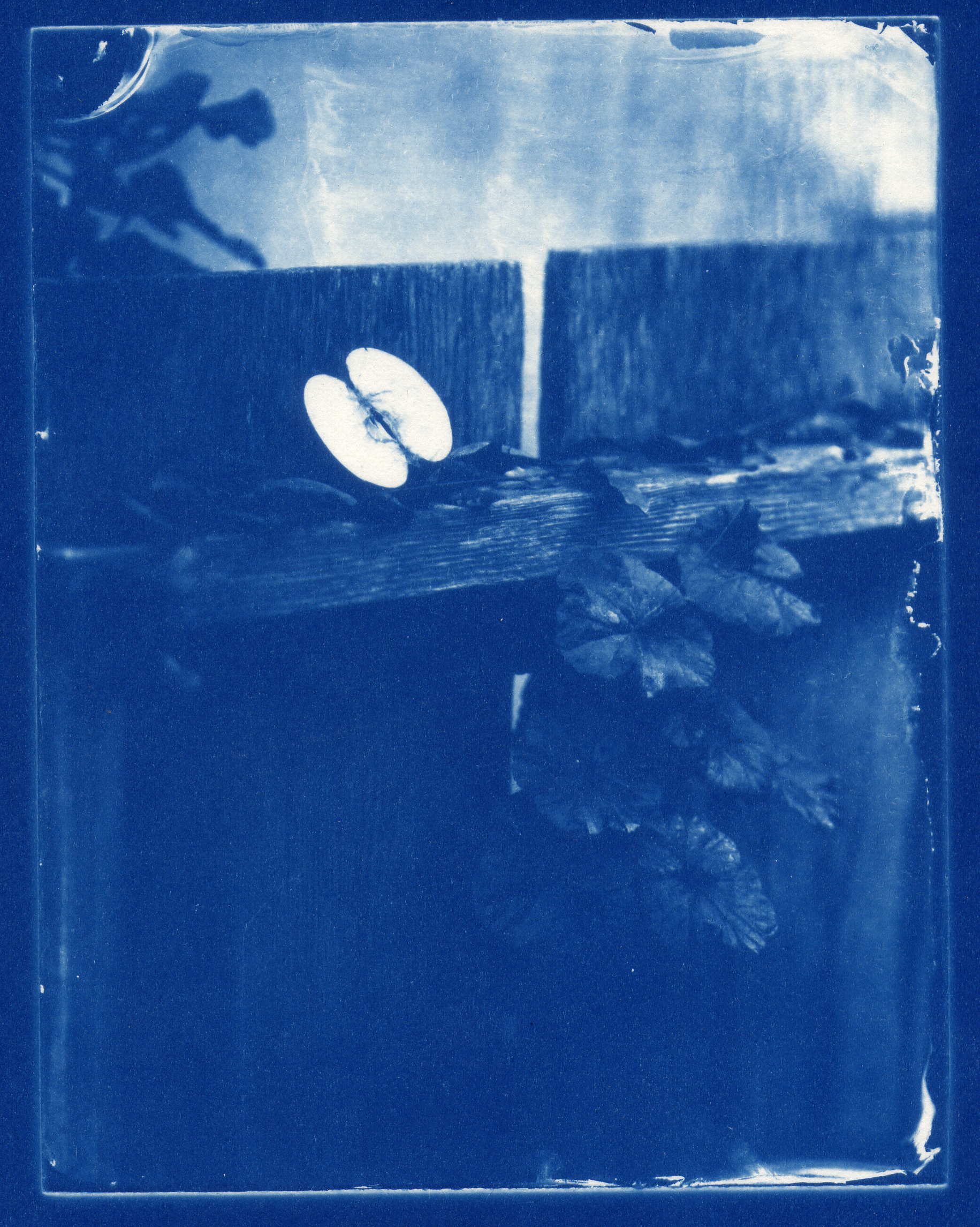Cyanotype
Cyanotypes, also known as "blueprints," are one of the earliest non-silver photographic processes, first noted in 1842. Not only did the light sensitive nature of iron (ferric) salts (with which a cyanotype is created) prove to yield a fully-scaled image, they also proved to create one of the most archival photographic printing methods.
To create a Cyanotype, equal solutions of ferric ammonium citrate and potassium ferricyanide are combined, and coated onto paper. The dried sheet is contact printed in the Sun (or other ultraviolet light source), and developed in water. The name "Cyanotype" results from the image's blue (cyan) values. Over time the blue tone deepens as a result of the iron's oxidation (rust). Each print is subsequently hand waxed to protect the image.
Contact cvpphoto@yahoo.com for custom print pricing.

cyanotype from wet-plate collodion negative
Make a free website with Yola